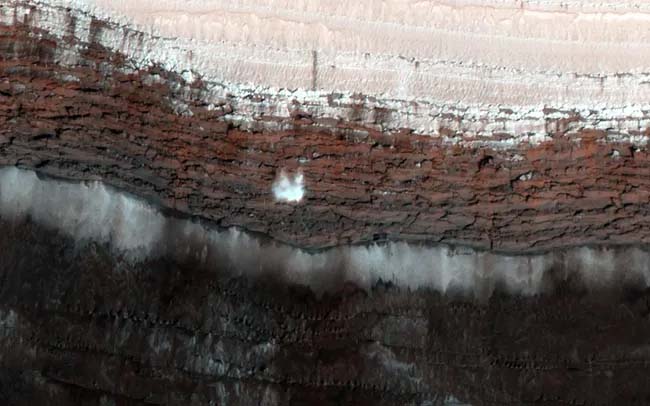Science: Instead of a cold glass of ice and bubbles of champagne to welcome the new year, how about gassy geysers and icy avalanches? That’s exactly what you can expect because the new year on Mars begins with the arrival of spring.
The term “walking in the winter wonderland” on Mars means running across the surface, dodging colliding rocks and blasts of carbon dioxide. Unlike our northern hemisphere on Earth, on the Red Planet, the new year begins with the beginning of spring. The Martian new year began on November 12, 2024, and lasts 687 Earth days, with temperatures starting to rise and the weather changing significantly from winter to spring.
“On Earth, there’s a lot of drizzle in the spring, as water ice slowly melts. But on Mars, everything happens with a bang,” Serena DiNiga, who studies planetary surfaces at NASA’s Jet Propulsion Laboratory in Southern California, said in a statement. “Instead of melting, you get a lot of crackling and explosions, and I think it’s really noisy.” The Martian atmosphere is very unique compared to Earth. For example, when ice melts, the liquid doesn’t form puddles and pools on the surface; instead, sublimation occurs, which turns solid ice directly into a gas. This sudden change can be quite violent, as both dry ice (made from carbon dioxide) and regular ice (made from water) become very weak and begin to break apart.
Since we can’t see this directly on Mars, scientists rely on NASA’s Mars Reconnaissance Orbiter (MRO) to track these changes. The Red Planet has been home to MRO since its launch in 2005, and it is equipped with a variety of instruments that provide images and observations from the surface.
“The chance observations we get remind us how different Mars is from Earth, especially in the spring, when these surface changes are most noticeable,” DiNiga said. “We’re fortunate to have a spacecraft like MRO that has been observing Mars for so long. Observing for nearly 20 years has given us the opportunity to capture dramatic moments like avalanches.”
